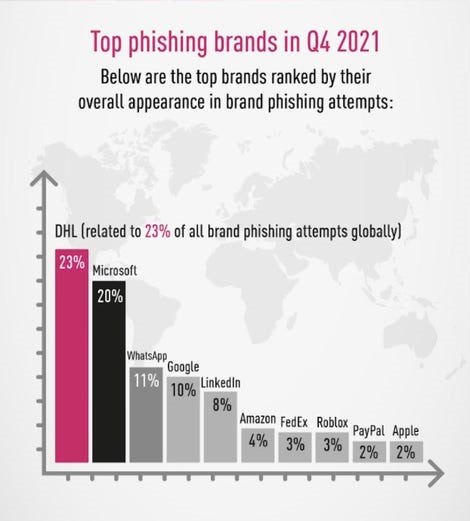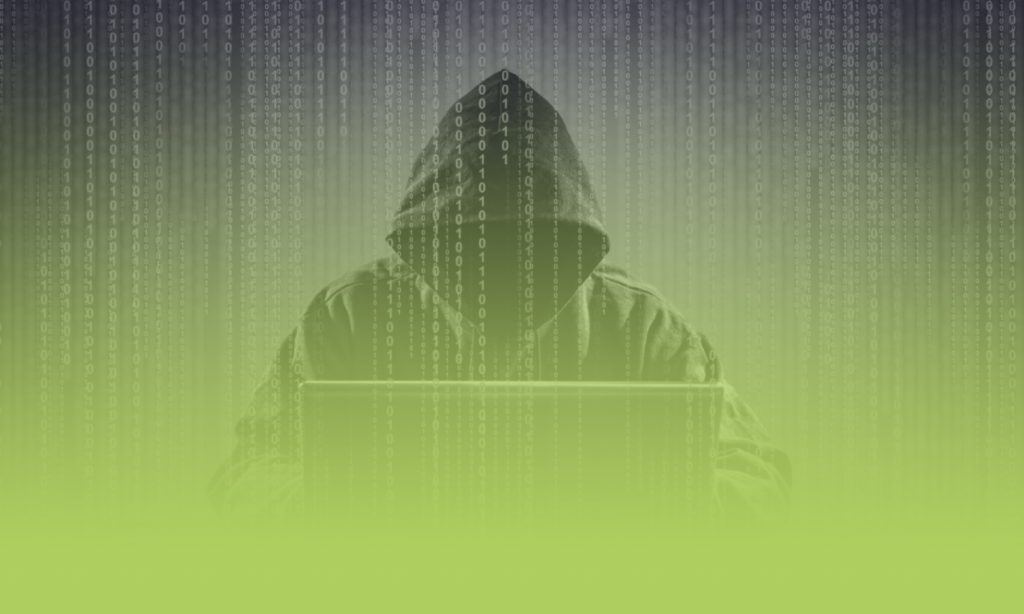According to the Check Point Research report, companies such as DHL, Microsoft, and WhatsApp are at the top of the list of most commonly used brands in phishing attacks. Google, LinkedIn, Amazon, FedEx, Roblox, PayPal, and Apple also made the top 10.
In the fourth-quarter 2021 Brand Phishing Report, experts shared that the DHL brand was used in 23% of all phishing attacks they observed worldwide in October, November, and December. Microsoft came in second at 20%, WhatsApp at 11%, and Google at 10%.
Hackers adapt instantly to the current situation and often take advantage of consumer trends. Therefore, we are not surprised that in the pre-New Year’s period, the logistics company (DHL) has become their target.
Potentially vulnerable online buyers suffered the most from these attacks. We’re talking about elderly users who are less technically skilled than younger generations or shop online for the first time. They may not know what to look out for when it comes to things like delivery confirmation emails or tracking packages. Furthermore, because of the rise in COVID cases, people have become more reliant on delivery services, and it’s not surprising that cybercriminals are trying to capitalize on this.
Researchers also found that social platforms are popular among hackers. LinkedIn, for example, moved from 8th place to 5th place compared to Q3 2021, and the professional platform now accounts for 8% of all phishing attacks. WhatsApp moved from 6th to 3rd place.

Experts predict that hackers will continue aggressively using social media in phishing attacks. The consequences of the pandemic in the form of remote work and the ability to communicate only online played into the hands of cybercriminals.
It is not for nothing that humans are considered the weakest link in the cybersecurity chain. We can all too easily overlook misspelled domains, misspellings, wrong dates, or other suspicious details or give in to emotion, and that is what opens the door to further damage. Experts urge users in the coming months to be careful when dealing with brands like DHL, Microsoft, and WhatsApp.




